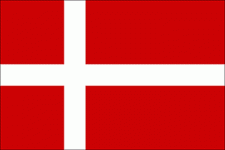
The Danish government made 9 national goals for integration in 2012, mainly relating to the integration of first and second generation refugees and migrants from non-Western countries*. It produces an annual report to keep track of progress towards these goals, using data from Statistics Denmark and its annual citizen survey, and in 2022-24 saw progress towards 6 of them. Among the other 3, progress in one remained steady overall, progress in another declined, and progress in the third was mixed.
The 9 goals cover the following areas:
1. Work:
2. Education
3. Danish language
4. Active citizenship
5. Equality
6. Self determination
7. Self-support
8. Vulnerable housing areas
9. Crime
Overall, the 2023 report shows that an increasing number of people from the migrant groups studied are employed or enrolled in education. Fewer young people from these groups face restrictions from their family when it comes to their social life and lifestyle choices, fewer housing areas fall within the criteria of the “parallel society list” (formerly known as the ghetto list), and fewer young people are convicted of a crime.
Alongside these improvements, the report demonstrates that current legislation to promote progress towards one goal may in some cases be having a negative effect on progress towards another goal. For example, in some cases a person applying for permanent residence or citizenship may opt for employment rather than education, because time spent in education does not count as eligible time spent in the country for such an application, as previously discussed on EWSI.
Correspondingly, according to the report the number of migrants completing a Danish language course has fallen, and fewer are currently active in Danish politics. Research has found that - in the longer term - completion of education to a certain level and mastery of the Danish language are conducive to a stable, strong attachment to the labour market. Despite this, local job centres are required to provide new arrivals with job opportunities as soon as possible, and it is clear that securing employment makes it less likely that a person will complete Danish language courses.
The report contains an appendix with separatue figures relating to those displaced from Ukraine: this group is not included in the overal statistics given in the document.
*) NB: Denmark's statistics generally distinguish between residents with a foreign background from either ‘Western’ or ‘non-Western’ countries. In the Danish context, 'Western' countries are understood to be all EU countries plus Andorra, Australia, Canada, Iceland, Liechtenstein, Monaco, New Zealand, Norway, San Marino, Switzerland, United Kingdom, the United States and the Vatican. Those from any other country are defined by Denmark as 'non-Western'.
Details
- Publication dates
- Geographic area
- Denmark
- Source
- Posted by
